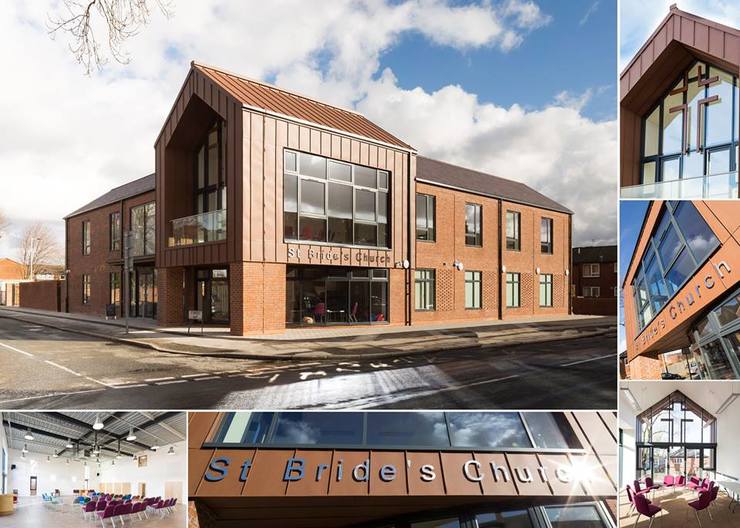04/02/2020
This blog is written by a member of the independent Commission. These views do not necessarily represent the views of the Archbishops' or the Church of England.
‘Not another one’ was the reaction of the Parochial Church Council (PCC) of St Bride’s, Trafford, when they found out that they may have to embark on building a new church. Just a couple of decades before, their Victorian building had been condemned, and they’d had to scrape together funds for a new building. Now Trafford Housing Trust (THT) had plans for their land, and they’d offered to build them another new church.
This time would be different, though. The church wouldn’t have to manage the development alone. It also wouldn’t cost them, as their new building would be provided free-of-charge in exchange for their land. Crucially, this time, the church, housing association, and wider community would all benefit.
The plan wouldn’t have worked without the church moving to make way for the changed layout of the new development, with the new church building on the right and THT’s Limelight centre – eighty-one extra-care apartments for over 55s, and a new, expanded community centre – on the left.
The idea was to give a ‘heart’ to Old Trafford. Previously, it had had no real centre, and no cafés. Now, with a library, café, and five businesses in one building, people bump into one another, and find out about community events.
When THT announced that they had funding to build a new centre, they worked with the community to address their concerns. They found that health and wellbeing were major problems in the area, because the cost of getting to the nearest health facilities was prohibitive. Because of this, the new centre is home to a large GP surgery, pharmacy, opticians, hairdressers and nursery.
St Bride’s has also done very well out of it. Their old premises were awkward, with church activities held in a rickety three-storey Victorian manse. While their new building provides equivalent facilities, it meets modern standards, including a lift and an upgraded kitchen, all within one building. Although there have been compromises such as a smaller church garden, the process has allowed them to design the space to suit their needs. The continued relationship with THT also helps them – Limelight now hosts the church’s knitting club.
The Archbishop of Canterbury’s Commission on Housing, Church and Community is exploring how churches can build both housing and community. Putting the fate of your church into the hands of another organisation can be worrying. However, this development shows that it can have a real effect on the whole community, and can be beneficial for churches, too. Maybe it’s time churches were more proactive in building these relationships with housing associations and other local community groups.
Notes:
- In the ‘independent living’ section of Limelight, there are 81 flats with ‘extra care’ for people over 55. 11 of these are shared ownership, while the other 70 are for rent at an affordable rate (80% of market rents). As a person’s needs change, they can increase the level of care that they receive.
- The previous community centre was funded by the council. Limelight’s community centre is run by THT, but is self-funding using the rent from the businesses.
- Although the church has got a smaller garden than before, they have upgraded AV systems and a new kitchen, along with bigger rooms.
- Before this development, St Bride’s were using their twenty-five-year-old church building and Victorian manse to host their activities, while the modern manse housed the Rector. They now have a new manse, along with an integrated church building for all their activities.
- While St Bride’s did not have to manage the scheme themselves, it involved considerable time on behalf of the Rector and PCC, in order to ensure the development met the church’s requirements.
- Money was not a major issue, as the new building was not paid for by St Bride’s. The legal costs for St Bride’s – for the Diocesan registrar’s time providing legal oversight of the land sale and property agreement – were also covered by THT.

